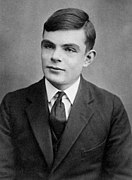" Counterexample of ABC Theorem " 2019/10/29
I explain the concept of the proof of not ABC theorem
In early time I wondered if the seed of AP coprime to 30 is the counterexample of ABC theorem
If { k*m , k*n } is AP , GCD(k,m) = 1, GCD(k*n) , then k is sprout and { m , n } is seed
Here is the list of AP coprime to 30
http://
The first one's seed is the following
89*100329964009286143948575662850542265921787709
9029696760835752955371809656548803932960893899
Let A be the first number B be the second one
It satisfies the following
A + B = C where C = 2^64*3^29*5^11*7^4*11^2
ABC theorem says
C < RAD(A*B*C)^2
Roughly A = B So C = 2*B Hence
2*B < (B^2*2*3*5*7*11)^2
It is rather good because C has high power of little prime
If B is of the form p^5 then
2*p^5 < p^4*2310^2
p < 2310^2/2
If p has 8 digits then ABC theorem is not correct
B is necessary to have forty digits In this case indeed B has forty six digits But neither A nor B is p^5
If they are both p^5 then it might be the counterexample of ABC theorem
More exact proof is in my past mail "Proof of Not ABC Theorem" which was posted to Seqfan ML
The program in Mathematica has useless line
Better one is the following
primen(p) = (denominator(p) == 1) && (isprimepower(p) == 5);
pro(m) = { my(N=0, p=23, X=p, Y=2*p+1 );while( N<m, X=X+Y; while( Mod(X, 2) == 0, X=X/2; N++); my(Q=(2^N*X-p)/Y, R=(p+1)*Q+p);if( primen(Q) == 1 && primen(R) == 1
, print( p, " ", Q," ", R, " ", N, " ", X))) };
Yasutoshi
" Proof of Not ABC Theorem " 2010/5/14
I consider the following problem
p'*q'+r'=2^n*k -E3- where p',q',r' are of the form Prime^5, n is high, k is small
(p'+1)*(q'+1)=r'+1 -E4-
[ The program to compute E3, E4 ] in Mathematica like language
V_o=v_0
[ V=V_0, X=p', Y=2*p'+1, N=0, P=p'
WHILE[ N<V, X=X+Y
WHILE[ X=0 Mod 2, X=X/2, N=N+1 ] ]
Q=(2^N*X-P)/Y
IF[ PRIME_5Q[Q]=1
R=(P+1)*Q+P
IF[ PRIME_5Q[R]=1 END ELSE V_0=V_0+1 ]
ELSE V_0=V_0+1 ] ]
p'=P, q'=Q, r'=R, n=N, k=X
Where PRIME_5[N] is If N is of the form Prime^5 Then 1 Else 0
We assume E3.E4. are solved, it means that both q' and r' become of the form of Prime^5 and rewrite it p'=p^5, q'=q^5, r'=r^5
p^5*q^5+r^5=2^n*k
(p^5+1)*(q^5+1)=r^5+1
Where p,q,r are Prime
Let u be a number which satisfies the following
u*p*q=r
ABC Theorem is the following
If A+B=C , GCD(A,B)=1 then
C<(RAD(A*B*C))^2
If N=Product p_i^r_i then
RAD(N)=Product p_i
2*p^5*q^5<p^5*q^5+r^5<(RAD(p^5*q^5*r^5*2^n*k))^2
=(RAD(p*q*r*2*k))^2
= (p*q*r*2*k)^2
=p^2*q^2*u^2*p^2*q^2*4*k^2
p*q<2*u^2*k^2
In the program X has a limit which is 2*P so
k<2*p^5
p*q<8*u^2*p^10
q/p^9<8*u^2
The case of the record of Type(2,1) Amicable Pair coprime to 30
q/p^9=almost 10^6 and u=almost 1 because u=r/(p*q)=:(r+1)/((p+1)*(q+1))=((r+1)^5/((p+1)^5*(q+1)^5))^(1/5)=1^(1/5)=1
So if E3 E4 is solvable then ABC Theorem is incorrect
For complete proof the following theorem are necessary
T.1 It is possible that both q' and r' are of the form of prime ^5
T.2 The limit of the sequence X is 2*P
T.3 It is possible that q/p^9 is more than 8*u^2
T.1 : If we run it and found the q' and r' then it is proved
T.2 : it is easy to prove
T.3 : q has no relationship with p so 8 << q/p^9 is possible
The problem and the Algorithm are generalized as follows
p*q+r=2^m*k where p,q,r are of the form of Prime^n m is high k is small
(p+1)*((q+1)=r+1
In the Algorithm PrimeQ_5 is rewritten as PrimeQ_n
For n=1 it is the computing of Amicable coprime to M. The example which satisfy T.1, T.2, T.3 exists
For n=5 it is ABC problem
[ x+a sequence ]
Read the past mail "AN coprime to 210 and x+a sequence"
http://
The next line of E1 is typo. The correct one is the following
GCD(c,u)=1, GCD(c,v)=1
The explanation of x+a sequence and the proof of T.2 exist in it
You will understand both programs of these two mails are almost the same
The program gives how to find the counterexample of ABC Theorem, so after all, it is possible to find it, if you have a fast computer
Yasutoshi
I explain the concept of the proof of not ABC theorem
In early time I wondered if the seed of AP coprime to 30 is the counterexample of ABC theorem
If { k*m , k*n } is AP , GCD(k,m) = 1, GCD(k*n) , then k is sprout and { m , n } is seed
Here is the list of AP coprime to 30
http://
The first one's seed is the following
89*100329964009286143948575662850542265921787709
9029696760835752955371809656548803932960893899
Let A be the first number B be the second one
It satisfies the following
A + B = C where C = 2^64*3^29*5^11*7^4*11^2
ABC theorem says
C < RAD(A*B*C)^2
Roughly A = B So C = 2*B Hence
2*B < (B^2*2*3*5*7*11)^2
It is rather good because C has high power of little prime
If B is of the form p^5 then
2*p^5 < p^4*2310^2
p < 2310^2/2
If p has 8 digits then ABC theorem is not correct
B is necessary to have forty digits In this case indeed B has forty six digits But neither A nor B is p^5
If they are both p^5 then it might be the counterexample of ABC theorem
More exact proof is in my past mail "Proof of Not ABC Theorem" which was posted to Seqfan ML
The program in Mathematica has useless line
Better one is the following
primen(p) = (denominator(p) == 1) && (isprimepower(p) == 5);
pro(m) = { my(N=0, p=23, X=p, Y=2*p+1 );while( N<m, X=X+Y; while( Mod(X, 2) == 0, X=X/2; N++); my(Q=(2^N*X-p)/Y, R=(p+1)*Q+p);if( primen(Q) == 1 && primen(R) == 1
, print( p, " ", Q," ", R, " ", N, " ", X))) };
Yasutoshi
" Proof of Not ABC Theorem " 2010/5/14
I consider the following problem
p'*q'+r'=2^n*k -E3- where p',q',r' are of the form Prime^5, n is high, k is small
(p'+1)*(q'+1)=r'+1 -E4-
[ The program to compute E3, E4 ] in Mathematica like language
V_o=v_0
[ V=V_0, X=p', Y=2*p'+1, N=0, P=p'
WHILE[ N<V, X=X+Y
WHILE[ X=0 Mod 2, X=X/2, N=N+1 ] ]
Q=(2^N*X-P)/Y
IF[ PRIME_5Q[Q]=1
R=(P+1)*Q+P
IF[ PRIME_5Q[R]=1 END ELSE V_0=V_0+1 ]
ELSE V_0=V_0+1 ] ]
p'=P, q'=Q, r'=R, n=N, k=X
Where PRIME_5[N] is If N is of the form Prime^5 Then 1 Else 0
We assume E3.E4. are solved, it means that both q' and r' become of the form of Prime^5 and rewrite it p'=p^5, q'=q^5, r'=r^5
p^5*q^5+r^5=2^n*k
(p^5+1)*(q^5+1)=r^5+1
Where p,q,r are Prime
Let u be a number which satisfies the following
u*p*q=r
ABC Theorem is the following
If A+B=C , GCD(A,B)=1 then
C<(RAD(A*B*C))^2
If N=Product p_i^r_i then
RAD(N)=Product p_i
2*p^5*q^5<p^5*q^5+r^5<(RAD(p^5*q^5*r^5*2^n*k))^2
=(RAD(p*q*r*2*k))^2
= (p*q*r*2*k)^2
=p^2*q^2*u^2*p^2*q^2*4*k^2
p*q<2*u^2*k^2
In the program X has a limit which is 2*P so
k<2*p^5
p*q<8*u^2*p^10
q/p^9<8*u^2
The case of the record of Type(2,1) Amicable Pair coprime to 30
q/p^9=almost 10^6 and u=almost 1 because u=r/(p*q)=:(r+1)/((p+1)*(q+1))=((r+1)^5/((p+1)^5*(q+1)^5))^(1/5)=1^(1/5)=1
So if E3 E4 is solvable then ABC Theorem is incorrect
For complete proof the following theorem are necessary
T.1 It is possible that both q' and r' are of the form of prime ^5
T.2 The limit of the sequence X is 2*P
T.3 It is possible that q/p^9 is more than 8*u^2
T.1 : If we run it and found the q' and r' then it is proved
T.2 : it is easy to prove
T.3 : q has no relationship with p so 8 << q/p^9 is possible
The problem and the Algorithm are generalized as follows
p*q+r=2^m*k where p,q,r are of the form of Prime^n m is high k is small
(p+1)*((q+1)=r+1
In the Algorithm PrimeQ_5 is rewritten as PrimeQ_n
For n=1 it is the computing of Amicable coprime to M. The example which satisfy T.1, T.2, T.3 exists
For n=5 it is ABC problem
[ x+a sequence ]
Read the past mail "AN coprime to 210 and x+a sequence"
http://
The next line of E1 is typo. The correct one is the following
GCD(c,u)=1, GCD(c,v)=1
The explanation of x+a sequence and the proof of T.2 exist in it
You will understand both programs of these two mails are almost the same
The program gives how to find the counterexample of ABC Theorem, so after all, it is possible to find it, if you have a fast computer
Yasutoshi
|
|
|
|
|
|
|
|
「自由クラス理論」非標準集合論 更新情報
-
最新のイベント
-
まだ何もありません
-
-
最新のアンケート
-
まだ何もありません
-
「自由クラス理論」非標準集合論のメンバーはこんなコミュニティにも参加しています
人気コミュニティランキング
- 1位
- 暮らしを楽しむ
- 75494人
- 2位
- 写真を撮るのが好き
- 208297人
- 3位
- 音楽が無いと生きていけない
- 196028人






